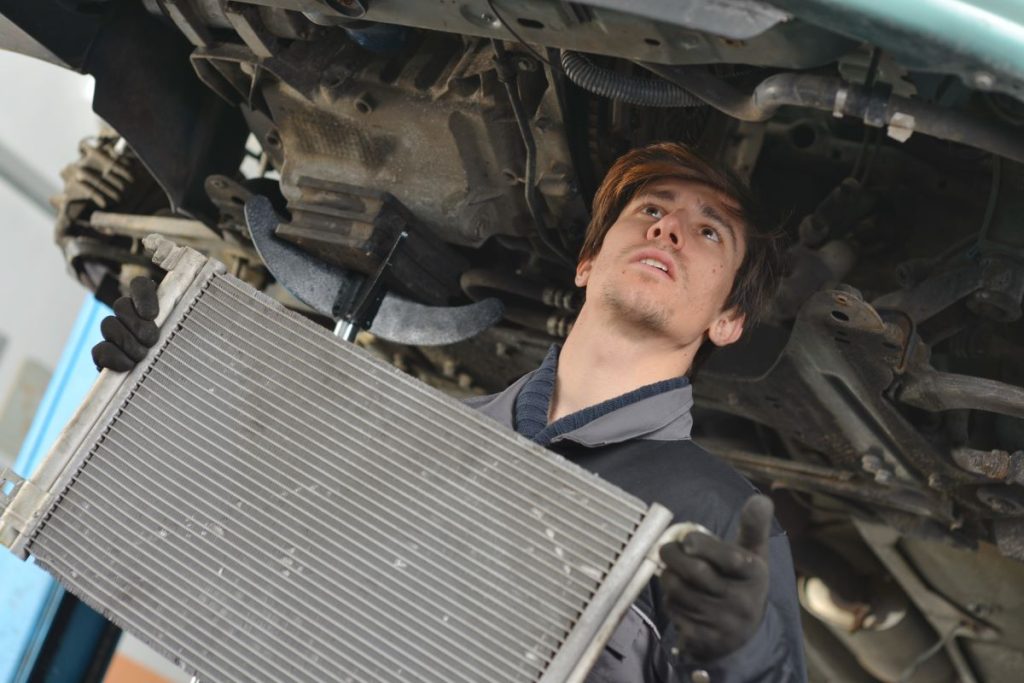
In order to keep your car’s engine from overheating, coolant is pumped through it at a rate of 20 times per minute. The cooling system’s radiator serves the vital function of bringing the coolant’s temperature down as the coolant passes through. So if you notice the following indications of radiator trouble, it’s best to visit your local Ford dealership for radiator repair before your engine grows too hot and begins to break down.
How To Tell When Your Ford Needs a Radiator Repair
Leaking Coolant
Coolant is usually a brightly colored, slightly sweet-smelling fluid. So if you ever notice a bright red, yellow, green, or blue liquid puddling under your car, you might have a leak in your radiator. You can check the coolant reservoir to see if the level is unusually low.
Leaking coolant might also create stains on other engine parts when it drips and burns away in the engine’s heat. A leak can originate from cracks in the hoses, hose connectors, the radiator cap, or a crack in the radiator itself from rusting or other damage.
Discolored Coolant
When problems develop inside the radiator, such as internal clogging, rust, or buildup of other contaminants, the coolant will often change color. You can check your coolant’s color in the coolant reservoir, which is usually transparent.
If the usual bright color has dulled to a rusty brown or the coolant has clearly thickened, then it’s likely the inside of your radiator needs to be cleaned. While fresh coolant does have strong anti-rust properties, aging coolant can begin to lose these properties, allowing internal rust to form.
Clogged Radiator Fins
The myriad fins in a radiator separate the coolant from the engine. As you drive, the rush of air over the fins then lowers the coolant’s temperature.
But over time, dirt and debris can fly in through the car’s grill and become stuck between the fins. And if a radiator’s fins become too clogged up by debris, they won’t be able to cool the coolant properly and will need to be cleaned.
Overheating Engine
When a radiator problem is allowed to develop, the engine will eventually start to overheat. Your first warning of this will probably be the engine temperature gauge on your dashboard rising above 220 degrees Fahrenheit. You might also hear ticking and knocking sounds from the engine, your car will lose power, and the hood will become hot to the touch.
What a Ford Dealer Checks When Your Radiator Fails
When diagnosing radiator trouble, a technician at your local dealership will examine the entire cooling system. They’ll clean away external debris and check the hoses for cracks and also for overheating which might indicate a thermostat problem. They’ll also pressure-test the radiator cap, thermostat, fan, and pump.
Have your radiator examined and repaired today by experienced professionals at Boyd Brothers Ford. For over two decades, we’ve been providing the region’s Ford drivers with great cars and great service.



